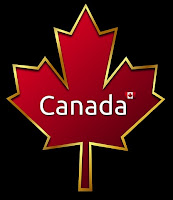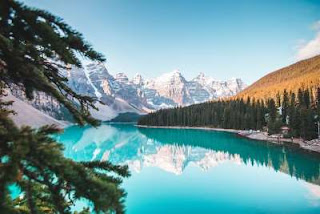History of Canada
History of Canada, the land of beavers,hockey and snow but does it really paints the completepicture of the country. The history of the Canada is filledwith conflicts and struggles. The history of Canada is very vast andinteresting, from the arrival of Vikings to the present-day Canada which ishome to people of a vast diversity. Long before the foreign armiesstep their foot on the Canadian land, it was inhabited by theindigenous people of Canada. With start of 15th Century, the French and British expeditions explored, colonized and fought for various parts of North America which later formed The Province History of Canada. Different parts of thecountry were conquered and control by Frenchand British Army. Later the British Armies took control overa vast part of the country after France was defeated in The Seven Year War (calledThe French and Indian War by Americans). Although the British werethe first to claim land on the North American in 1497when Jon Cabot claimed some North American coasts(modern-day Newfoundland or Nova Scotia) on behalfof King Henry VII
. But those claims were notexercised and Britain didn’t make any further attemptto colonize the areas. However as the British didn’tmake any further claims at that time, the French started their own expeditions and the first French colonywas established in 1534 by the name of NouvelleFrance (or New France).
 |
| History of Canada |
After the British won theSeven-year war, they took over all the French colonyand signed The Paris Treaty which forced French to completelycease all there businesses and trades except the fishingrights for the Newfoundl and. The British controlled Provinceof Quebec was divided into two different parts, thosewere Upper and Lower history of Canada, these remained like this until 1841. In 1894 Upper and LowerCanada unified to form Province of Canada, furtherdown the road in 1867, Province history of the history of Canada wasfurther joined by two British colonies toform modern-day history of Canada. During the American Revolutions,Canadian refused to be a part of the war which led to hatredbetween Americans and Canadians. Canadians were generallybranded as Non-American, which they later decided to be abetter suited for them. Over thousands of years of their history of Canada has elements of Indigenous people, French, British and their inner conflictsrelated to the independence of Quebec. Canada before the Foreign Colonization Indigenous People history of Canada Archeological evidence statesthat North and South America were the last continents tobe migrated by the people.
 |
| History of Canada |
During the Wisconsin Glaciation 50,000-17,000BC, the sea level gradually lowered in this part of the globe which allowed peopleto migrate into northwest North America. The exact dates of themigrations to American are still debated over byhistorians and archeologists. First Foreign Contact There are some traces of contactmade by The Norse, who had settled the Greenland andIceland, known as the Vikings. There is evidence of their visit to theNorth American lands in the 11th Century, in a small settlement built by them atthe northernmost tip of Newfoundland. French Colonies in history of the Canada Francis I of France sentthe French expedition in hope to expand the French empire overseas. Jacques Cartier planted across in the Gaspe Peninsula in 1534 and claimed the nameon behalf of Francis I. This led to the establishment ofthe first French colony in Canada. Further attempts to claim Charlesbourg-Royal, Sable Island and Quebecall failed eventually. In 1608 Champlain founded the Quebec City. This was one of the earliestpermanent settlements, which became the capital of New France. This city was further turned into themain center for the New French colony. The Seven Year War After the 17th century, both Frenchand British colonies were looking to expand their empire and tradeinside the North American mainland. In 1700’s French colonieswere well established along the shores ofSaint Lawrence River and Nova Scotia, however with the arrivalof the British colonies from the shore. Hudson’s Bay Company wasone of the biggest British colonies which laid claimto the Hudson Bay. Rupert’s Land was used to establishnew fishing settlements and trade. From 1688 to 1763, 4 French and Indian Wars along with 2 other wars were fought between the Thirteen Americancolonies of New France and Britain. British army used the irunmatchable Navy strength to attack the Frenchcolonies through Louisbourg. Canada under the British Rule With the end of The Seven Year War andsigning of the Paris Treaty in 1763, France had to agree to cease control ofall its colonies in the American land, with an exception of fishingrights in Newfoundland. Some French people who choose to livein the country were made to work small jobs and further, there were variousbounds to what they can worship and speak. Later British returned Guadeloupe toFrance, which was its most important sugar-producing colony, it was consideredthe most profitable colony in history of Canada.
 |
| History of Canada |
Canada during
World War I The Canadian Army was the part of the Would War I to improve their relations with the British and develop goodconnections with them internally. Canadian Military really achieved a bigstature in this war due to the spirit shown by their troops during the battlesof Somme, Vimy, and Passchendaele, this period of war was later namedas “Canada’s Hundred Days”. This glorious endeavor by theCanadian Military really helped to give a sense of discreetidentity to the Canadian Citizens. The reputation earned by theCanadian troops under William George Barker and Billy Bishop reallyhelped to make a mark in the War. The Canadians basically participated inthe war due to their relations with the British but by the end of the war, thenumber of casualties was very high. Around 67,000 soldiers werekilled in the war with 173,000 injured and that’s excludingthe number of civilians. Canadians realized that thesacrifices made by their own people for the benefit of theBritish weren’t worth the cost. This led to some political disputeswith the British Government. Feminism and Women Suffrage in history of Canada From 1894 to 1918, Women’spolitical status was promoted without the vote by National Council of Women history of Canada. This suffrage movementproved a really important point in the history of the Canadian women right. While this movement improved the politicalstatus of the White women, it was achieved using race-based arguments whichlater made the situation a little grey. Women did vote in some smallerprovinces, where women who own a piece of land were allowedto vote in school trustees. Later in 1916 Manitoba took the leadby providing full Women suffrage. The Military Voters Act of 1917gave the votes to the war widows and to the women who lost theirsons in the aftermath of the war. Prime Minister Bordensupported women suffrage in his campaign and heintroduced the bill supporting equal womensuffrage, which was passed for all the provincesexcept for Quebec in 1918. Women in Quebec, however, had to waituntil 1940 to gain full suffrage. The very first women elected to Parliamentwas Agnes Macphail, Ontario in 1921. Canadian impact on theWorld stage after World War I With the great impact of theCanadian troops in the Allied forces, Canadian Prime Ministerstarted to be more assertive, convinced with the fact that Canadahas proven itself in the war front, he for a separate seat in theParis Peace Conference of 1919. After being opposed by the Britishand
the United States, Canada was given a seat in the Conference alongwith India, New Zealand, Australia, South Africa and Newfoundland on thebasis that these countries lost a large number of soldiers in the war anddeserves a place in the Peace Conference. history of Canada didn’t really alterthe proceedings of the Conference by participatingin a really modest manner. For them finally having a sit at thetable was a matter of great pride. Domestic Conditions history of Canada after thewar and during The Great Depression After the war was over the Liberal Government take it upon itself to improve the domesticconditions of the country. Liberal Government policies focusedon lowering wartime taxes, cooling the wartime tension and defusing postwarconflicts of the labor classes. In 1930s whole Americawas hit hard by the Great Depression and Canada was no exception. The Great Depression began in 1929 andby 1933 at the depth of the Depression, Unemployment reached 27% and Grossnational product dropped by 40%. Many large businesses wereforced to close and the exports are dropped by50% from 1929 to 1933. 30% of the labor force was out ofwork and nearly one-fifth of the population was completely dependenton the Government for their survival. The sectors which were hit worstby the Depression were the areas depending on the primary industrieslike farming, mining etc. In 1930, Prime Minister Mackenzie King blew away the effects of the Depressionin the country as a temporary swing in thebusiness cycle and refused to give any relief orshelter to the unemployed.
 |
| History of Canada |
He believed that the economy will improvewithout any Government intervention. Later, the opposition partyoverthrew the Liberal Party using this blunt wisecrack of the PrimeMinister in 1930’s Election. The Conservatives werethe winner of 1930’s election and appointedRichard Bedford Bennett. He promisedto resolve the situationby making deal with the Federal Government, but with the Depressiongetting worse with time. He later attempted to sign a New Dealwith United States President Franklin D. Roosevelt but that didn’t reallyhelp him to turn around the situation. This led to Mackenzie King gettingback to power in the 1935 elections. The worst of Depression was overby 1935 and the things were starting to get better untilthe Would War II broke out in 1939. The end of British Rule in Canada The British Parliament passedthe Stature of Westminster in 1931 which put history of Canada coequalwith the United Kingdom. It was a really crucialmoment in the Canadian complete independencefrom the British.history of the Canada in WWII Canada’s involvement inthe Second world-war helped to restore itseconomic status and really boosted its self-confidence,as it played a really crucial role inthe Atlantic and Europe. Even after playing a really crucial rolein the war by supplying food, and raw materials, Mackenzie King, and Canadianswere ignored by Winston Churchill. After the war, the Depressionended and Canada’s economic stature startedto extend significantly. Postwar period and relationswith the United States After the WWII, prosperity returned toCanada and continued to grow from there.
 |
| History of Canada |
In 1948, the British Government presentedthree choices in New foundland Referendum: First one was to remain a crown colony. The second one was to return to the Dominion status or to join Canada. After a year facing politicalpressure, finally, Newfoundland voted tojoin Canada in 1949. History of Canada was the founding member of NATOand in 1950 Canada sent combat troops to Korea during the Korean War to fightalongside the United States Army. The Quiet Revolution Quebec was one of the most important anddebated part of the Canadian Province. In the 1960s, a revolution took placeto overthrow the Roman Catholic Archdiocese of Quebec and furthermodernization of the economy and society. This revolution was latercalled as The Quiet Revolution. Quebec was controlled by thehigh-class British officials with the French generally working low-leveljobs to basically serve the British. The motives of the nationalists to secureFrench linguistic rights in the province and sovereignty for Quebec led to theelecting of Parti Quebecois in Quebec. In 1980, Referendum in Quebec was turneddown with 59 % voting against it. In this scenario, Quebecwould have been considered independent and will have itsown tax and law structure,
 |
| History of Canada |
they will maintain thetrades and business with the Canadian Province and alsoshare the same currency. Recent History (Post 1982) By 1982, British Government’slast remaining powers over the Canadian Constitution wereceased by passing a resolution requesting that the British enact apackage of constitutional amendments and would create an entirely Canadianprocess for constitutional amendments.
...........................
Life History.......................















No comments: